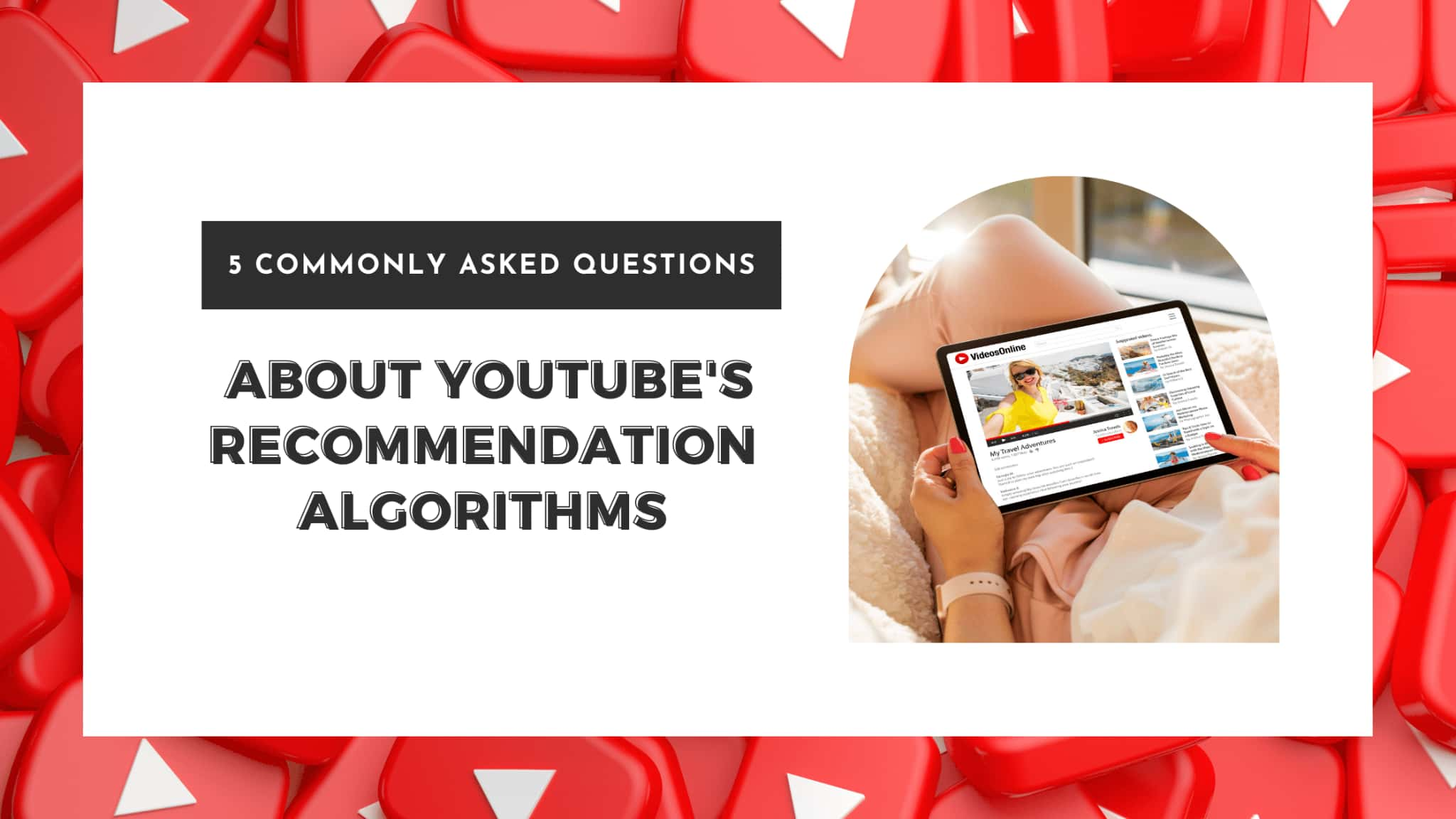
YouTube's Recommendation Algorithm: Commonly Asked Questions
Ever wonder how YouTube’s recommendation algorithm works?
Many YouTube video creators, whether professional YouTubers or companies believe the YouTube algorithm is a complete mystery—a greater force that rules over their view counts and is utterly beyond their control.
Lucky for you, this isn’t the case and we now have the answers. YouTube answered some frequently asked questions about its search and discovery methods, which may provide some further direction for your approach to the platform.
Below are the five questions posed by different YouTube Creators about the use of tags, recommendations, algorithm updates and more!
Should you promote your videos outside of YouTube, considering that YouTube may not be able to attribute all off-platform interaction metrics?
Creators should 'definitely' promote their videos outside of YouTube because doing so will only boost your chances of discovery based on user activity, despite direct attribution.
If your videos are receiving more traffic from outside sources, such as social media, this increases your chances of being discovered by additional viewers. Another advantage is that those viewers now have that video in their viewing history, which means they are more likely to be recommended one of your other videos in the future.
Why do people get recommendations for videos that were posted 10 to 12 years ago?
YouTube's system is designed to present viewers with videos that they are likely to watch, regardless of when the video was produced. That means that even older videos with high engagement will continue to be recommended based on user preferences.
YouTube requires a new strategy for highlighting new creators.
Many viewers want this, and YouTube just launched its 'New to You' page to expose new channels from outside of each viewer's typical viewing experience.
Should you focus on specific tags or more broad matching subjects when adding video tags to maximise discovery?
YouTube's video tags give creators another way to connect their content with specific inquiries, while YouTube expressly states that tags are not a primary algorithm consideration.
Tags are descriptive keywords that you can include in your video to assist people in finding your content. The title, thumbnail, and description of your video are more important pieces of information for video discovery. These key pieces of information assist viewers in determining which videos to watch.
Creators must concentrate on the features that viewers consider while deciding what to watch, namely the title, thumbnail image, and description. Instead of optimising tags, creators would be better off focusing on what works for other, comparable videos connected to their topic.
Is YouTube's algorithm changing?
YouTube is constantly changing its algorithms, but they do receive a lot more questions about anticipated algorithm changes around this time of year. This can give the impression that something has changed with the algorithm when, in fact, the shift is due to changes in viewing behaviour induced by outside lifestyle changes.
One thing remains constant as YouTube's algorithm evolves.
YouTube's algorithm has evolved significantly over the years, leaving creators and brands perplexed as to why the tactics they once relied on are no longer effective.
Even as the YouTube algorithm evolves, keep in mind that the platform's purpose remains the same: get more people to watch and interact with more videos on YouTube. And it's not that different from yours.
This new overview doesn't offer any game-changing insights, but it does provide more context for how YouTube's systems work and how content is displayed to each user in the app. This could assist you in better understanding some of the concepts and integrating them into your strategy.
Your aim – to develop your business online – that is also our mission at Elephant in the Boardroom. We don't want to waste your time with meaningless industry jargon or mind-boggling analytics. We have the knowledge and experience to work with businesses of different sizes and industries, and we take the time to learn about what makes yours tick.
Let’s make magic happen.




